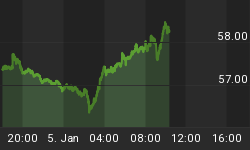With Beijing appearing to have stopped manipulating the Chinese currency, chances of a US-China trade deal seeing the light of day have increased significantly.
The phase one trade deal between the United States and China is set to be signed next week, calming fears of an escalating trade war in the near-term. A key tenet of the deal will be a clause that prohibits Beijing from manipulating the yuan, something it has repeatedly been accused of in the past.
Last year, President Trump directly accused Beijing of manipulating its currency, thus raising the specter of worsening trade relations between the two superpowers.
But the continued strengthening of the yuan against the dollar suggests that the PBOC is no longer trying to actively devalue it. Instead, it is allowing market forces to dictate its trajectory.
The partially-convertible yuan hit a five-month high at 6.94 per US dollar on Wednesday due to growing demand and supply forces.
Source: X-Rates
Currency Manipulation
Trump and the US Treasury Department declared China a “currency manipulator” in August for the first time in 25 years after the yuan dropped to its lowest level in more than a decade.
That’s a serious accusation, considering that the US has not labeled any country a currency manipulator since the Clinton administration did so for Beijing in 1994. Trump had repeatedly vowed to slap China with the damning label during his campaign though Washington had passed up on the opportunity to do so on no less than five occasions. Related: Millennials' Not-So-Healthy Health Craze
For years, the PBOC had been aggressively defending the yuan at the 6.9-to-the-dollar level but let it fall below the psychologically important level of 7 to the dollar in retaliation after Washington slapped an additional 10 percent tariff on $300 billion worth of Chinese exports to the United States. A weaker yuan would boost Chinese exports and negate some of the punitive effects of the tariffs.
The People’s Bank of China (PBOC) chose an unusual modus operandi, with the bank taking a hands-off approach and allowing the currency to continue to slide though it did later correct.
China has in the past been clearly guilty of currency manipulation: In the period spanning 2006 and 2014, the PBOC spent $350 billion annually buying USD and selling the yuan, resulting in the depreciation of the yuan and giving Chinese exporters an unfair advantage while imports suffered.
The U.S. Treasury Department employs three tests to determine whether a country is guilty of currency manipulation.
First off, a country can be found guilty of the crime if it has a significant bilateral trade surplus with the United States. China obviously meets this test with its goods deficit in 2018 hitting an all-time high of US$419 billion.
The second check is persistent intervention in foreign exchange markets, which China no longer does.
Many economists believe that the PBOC has stopped actively devaluing the yuan and, therefore, no longer meets the set criteria for manipulation.
The third test is a large current account surplus with the world. China has frequently been accused of building a large current account surplus, especially with the US. However, under Beijing’s ongoing rigid capital control regime, China is being forced to recycle its booming trade surpluses via official reserves. With these reserves needing to be invested in safe and liquid assets, the lion’s share has actually been finding its way into the US Treasury market.
Trade Truce
Growing demand for the yuan has also been driving some of the recent gains, with traders and fund managers buying the currency as optimism for a trade truce between the world’s two largest economies increases. Related: Trump Prepares For Another Key Tariff Decision
Meanwhile, Chinese exporters have been converting their US dollar receipts into the yuan ahead of the Lunar New Year, a week-long public holiday that begins on January 24.
As expected, the looming trade pact has placed safe-haven assets like gold and silver under pressure even as tensions between the United States and Iran begin to de-escalate.
On the opposite end of the spectrum, stocks have been rallying as the US market bull-run approaches an unprecedented 130 months.
By Anes Alic for Oilprice.com
More Top Reads From Safehaven.com:
















